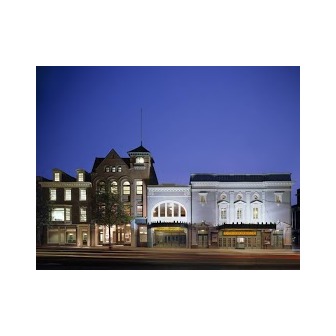The Strand-Capitol Performing Arts Center





The Strand-Capitol Performing Arts Center encompasses five buildings, including its two historic theaters - the Capitol Theatre, built in 1906 as a one-level dance hall and the Strand Theatre, which opened in 1925 primarily for vaudeville and silent movies. What is now the Capitol Theatre was once known as The Theatorium. The name was later changed to "The Jackson." During 1917, the theater was remodeled, adding a balcony exclusively for the showing of films. Nathan Appell and Louis Appell, Sr., who built the Strand Theatre, bought The Jackson in 1926, remodeled it again and reopened it as the Capitol in 1927. With an approximate seating capacity of 600, the theater continued as a popular movie house until it closed in 1977.
Designed by E.C. Horn & Sons and costing more than $1 million, the 1,200 seat Strand was a glittering example of Italian Renaissance architecture with its marble terrazzo floors, graceful archways and ornate decorative details - 1,800 pounds of gold leaf, 100 pounds of bronze and 4,000 pounds of ribbon gold in pilaster moldings. Murals designed by Hungarian artist Willy Pogany adorned the north and south walls of the auditorium. The seats were originally upholstered in Spanish leather and a spectacular 2,800-pound crystal chandelier hung from the ceiling. The Strand prospered during the days of silent film in the Roaring 20s, withstood the Depression in the 30s and continued to show movies until the birth of shopping centers and the residential growth of suburbia. As businesses suffered downtown, difficult times faced many of the downtown movie theaters, including the Strand. In February of 1976, the Strand closed.
A non-profit's mission serves as the guidepost for the organization. It is why we exist, and helps us understand what we should do, and should not do. The mission of Strand-Capitol Performing Arts Center is to enrich the quality of life in our community by engaging the region in a diverse arts program which promotes the arts through:
- audience development
- education
- entertainment
- collaboration
- community interaction while supporting economic development and ensuring the financial stability of our organization and the historic integrity of our buildings.
Explore Related Categories







